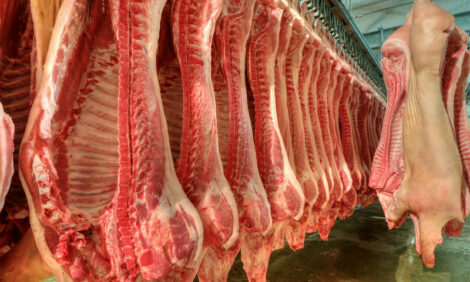



Market Preview: Corn Crop Looking Good on Paper
US - In this week's "Market Preview" from National Hog Farmer magazine, Steve Meyer discusses the US corn crop based on the latest "Grain Stocks" and "Acreage" reports.To say that last week’s Grain Stocks and Acreage reports from USDA were a surprise would be a bit of an understatement. Both reports were about as bearish as we can remember, especially against a backdrop of planting woes and serious concerns about the number of acres that may be harvested this fall.
Figure 1 shows the data from last week’s reports and the sharp differences between the 30 June estimates and those of the June World Agricultural Supply and Demand Estimates (WASDE), as well as analysts’ expectations. Corn acres, at 92.28 million, were above the highest estimates among the analysts surveyed and represent a 5 per cent increase compared to last year.

In addition, USDA reported that producers expect to harvest 84.9 million acres of corn, 4 per cent more than last year. That is the number, of course, that will truly drive the size of this year’s crop, and the number that is very uncertain at present given flooding problems and the amount of late-planted corn. As can be seen in Figure 2, USDA’s estimate that 91.7 per cent of corn acres will be harvested is not at all out of line with historical harvest rates. But the question of this year’s extenuating circumstances remains.

Yield Factor
The other factor – which was not addressed in last week’s reports – that will impact the ultimate size of the 2011 crop is, of course, yield. The latest USDA estimate in the June WASDE report was 158.7 bushels per acre. That yield is roughly 3 bushels below the oft-used 1996-to-present trend – a trend used because it represents the biotech age of corn production. But that period also represents generally good weather in that it includes no droughts. If one goes back to 1960 and captures both good and bad weather years, the trend yield for 2011 is 157.3 bushels per acre.
It is very possible that 91.7 per cent of the planted corn acres will be harvested —but what will they yield? Beyond growing conditions, this late-planted crop is susceptible to an early frost that could negatively impact yield.
So do you believe the numbers? Perhaps a better question is: "Could anything happen from here on that would make this crop look much better than it does right now on paper?" The answer is "Yes, it’s possible." But is it likely?
Corn Futures Down
New-crop corn futures closed last Friday from $0.30 to $0.90 lower than they traded on Wednesday. December ’11 and July ’12 futures closed $1.13 and $1.05, respectively, below their closing levels on June 9. That is roughly a $10/head reduction in potential costs—just in corn prices.
Losses Turn to Profits
At World Pork Expo, I gave a hog outlook that included record-high cutout values and hog prices. In spite of those prices, my cost model indicated at that time losses of $3.15/head for all of 2011 and $10.54/head for June 2011 through May 2012. Average costs for that 12-month period were $91.60. The same model using Friday’s closing futures prices pegs costs over the next 12 months at $84.58/cwt. carcass and profits at $3.70/head.

Monitor Market Closely
Corn is by no means cheap, but this sell-off may well represent a buying opportunity. To paraphrase Professor Grimes: “Buy some corn and hope you are wrong,“ since being wrong would mean the rest is less expensive. I would add that you should watch the market carefully over the next few days/weeks. If good news continues, it will continue to trend lower. But the crop has a long way to go and remember how surprisingly bearish this report is. What could add significantly to the bearish mood?
And to add to all of this good news – hog prices set another record last week. What a week, indeed!










